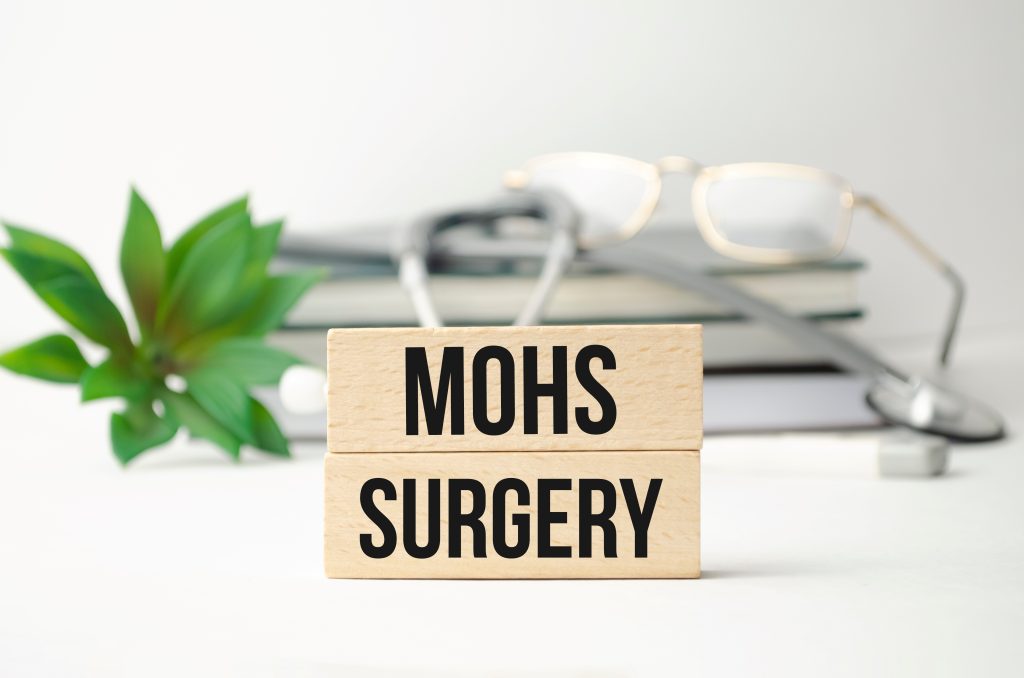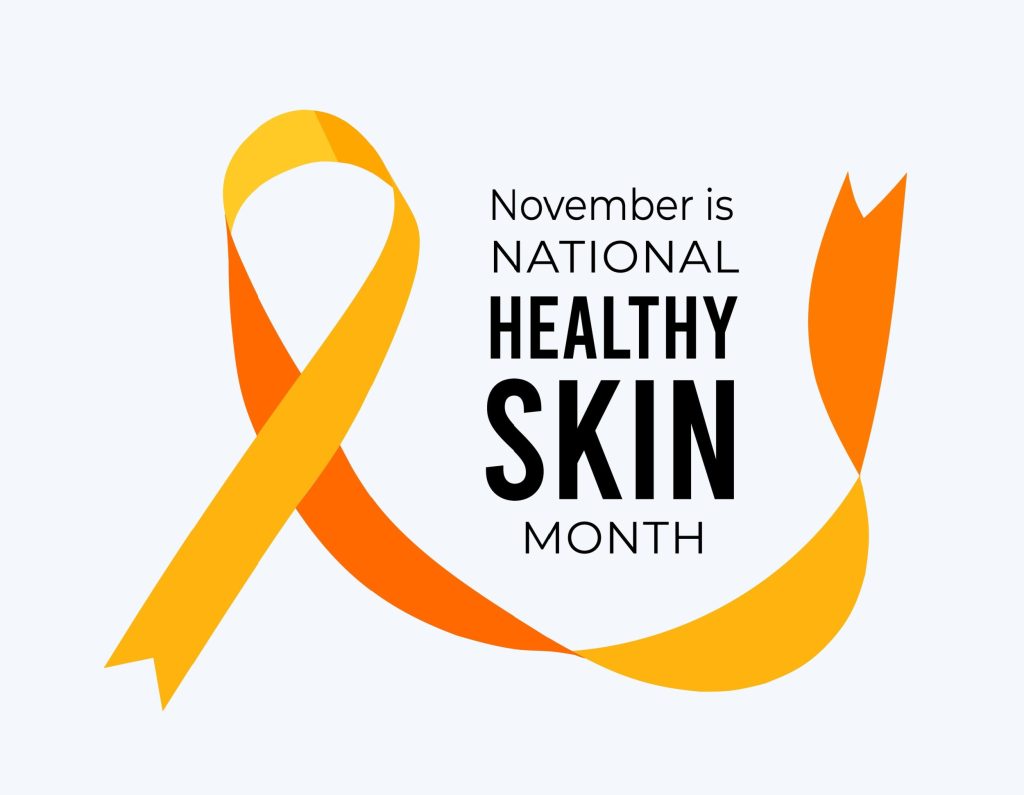
Cancer. Disease. Surgery. These are all words that may instill fear and unease when thinking about your skin and your health, especially after receiving a less than desirable diagnosis. But these words don’t have to be scary, and for many, through a specific type of procedure called Mohs surgery (also known as Mohs micrographic surgery, or MMS), there is hope on the other side of that initial uncertainty.
If you’ve just been given a new skin cancer diagnosis, know that you aren’t alone. Skin cancer is the most common form of cancer in the U.S., with more than five million cases of basal cell carcinoma (BCC) and squamous cell carcinoma (SCC) treated each year. * The good news is that when detected and treated early, most skin cancers are curable.
Diagnosis
When you visit a dermatologist specializing in Mohs surgery for a skin check, the process begins with a comprehensive skin examination. The dermatologist will carefully inspect your skin, focusing on any spots or lesions that appear unusual or have changed over time. If a suspicious area is identified, the dermatologist may recommend a biopsy, which involves taking a small sample of the skin tissue for further analysis. If the biopsy confirms skin cancer, the dermatologist will discuss the findings with you and explain the next steps.
Treatment
There are multiple options available for treating skin cancer, so how do you know which is right for you? If you’ve received a diagnosis of either a BCC or SCC, Mohs surgery is likely to be the preferred method as it is efficient, precise, and has up to a 99% cure rate for a skin cancer that has not been treated before, and up to a 94% cure rate for a skin cancer that has recurred after previous treatment.* Additionally, Mohs surgery is often considered the most effective technique for most types of other skin cancers, including melanoma, because it involves minimal discomfort, and encourages the greatest preservation of healthy tissue, which means less risk of scarring and superior cosmetic results.
Procedure
Mohs surgery is conducted in stages by a licensed and specially trained dermatologist or surgeon. During the procedure, the cancerous tissues are removed layer by layer. After removing a layer of tissue, the surgeon examines it under a microscope in an on-site lab. If any cancer cells remain, the surgeon removes another layer of tissue. This is repeated until a layer shows no signs of cancer and all the cancer is removed.
Follow-up care after Mohs surgery is essential for proper healing and monitoring. Here are the typical steps involved:
- Wound Care: The surgical site will be bandaged, and you’ll receive detailed instructions on how to keep the area clean and protected. This may include changing the bandage regularly and applying prescribed ointments to prevent infection and promote healing.
- Activity Restrictions: You may be advised to avoid strenuous activities or exercises that could stress the surgical area and delay healing. Specific instructions will depend on the location and extent of the surgery.
- Pain Management: Some discomfort is normal after the procedure. Your dermatologist may recommend over-the-counter pain relievers or prescribe medication to manage pain during the initial recovery period.
- Monitoring Healing: You will have follow-up appointments with your dermatologist to monitor the healing process.
- Skin Surveillance: Regular skin checks are essential after Mohs surgery to detect any new or recurrent skin cancers early. Your dermatologist will create a schedule for ongoing skin examinations and educate you on self-monitoring techniques.
- Sun Protection: Protecting your skin from the sun is vital to prevent further damage and reduce the risk of developing additional skin cancers. Your dermatologist will advise you on effective sun protection strategies, including using sunscreen, wearing protective clothing, and avoiding peak sun hours.
The Difference
The biggest difference between Mohs surgery and routine excisional surgery is that Mohs is done in stages, and lab results are immediately available to the surgeon on-site, rather than sending a tissue sample to a lab for results that wouldn’t likely be available for days to weeks. According to the Skin Cancer Foundation, Mohs surgery is the Gold Standard for treating BCC’s and SCC’s including those in cosmetically and functionally important areas around the eyes, nose, lips, ears, scalp, fingers, toes or genitals. Mohs is also recommended for carcinomas that are large, aggressive or growing rapidly that have indistinct edges, or have recurred after previous treatment.
Your Choice
As incidences of skin cancer continue to rise, it’s important to be well-informed and ready to make the best decision for your skin in your time of need. If left untreated, skin cancer can progress to the point of being life-threatening. Florida Dermatology and Skin Cancer Centers (FLDSCC), a family-focused practice with offices throughout Florida, recommends early detection and treatment of skin cancers because it saves lives and minimizes the areas of skin that may need to be removed or reconstructed. FLDSCC’s team (including fellowship-trained Mohs surgeons) are experts in diagnosing and treating skin cancers with the latest technological options.
For more information on Mohs surgery, or to schedule a comprehensive annual skin exam, call (855) FLD-SKIN, or visit www.fldscc.com.
*Skin Cancer Foundation facts and figures 2024.


